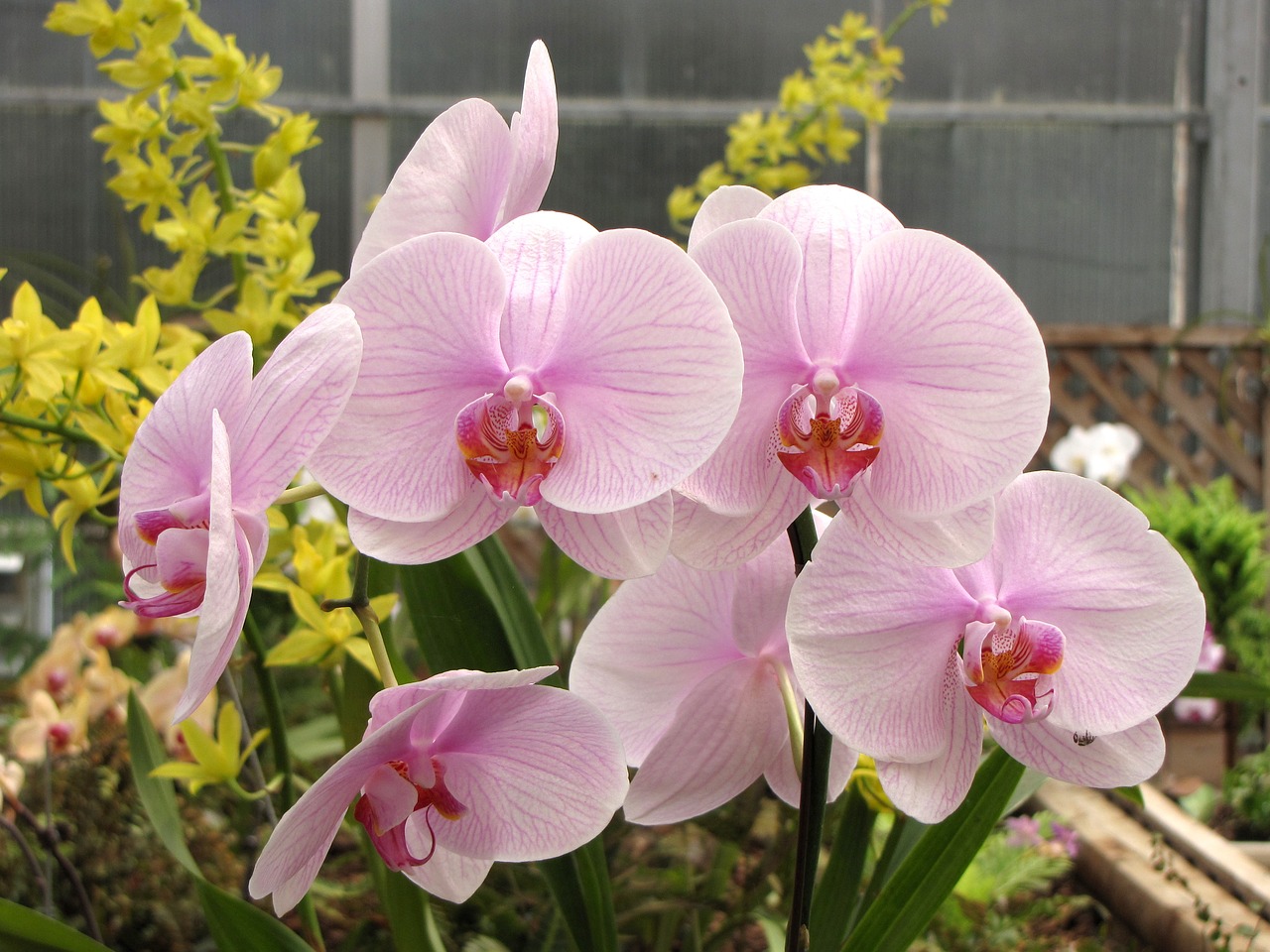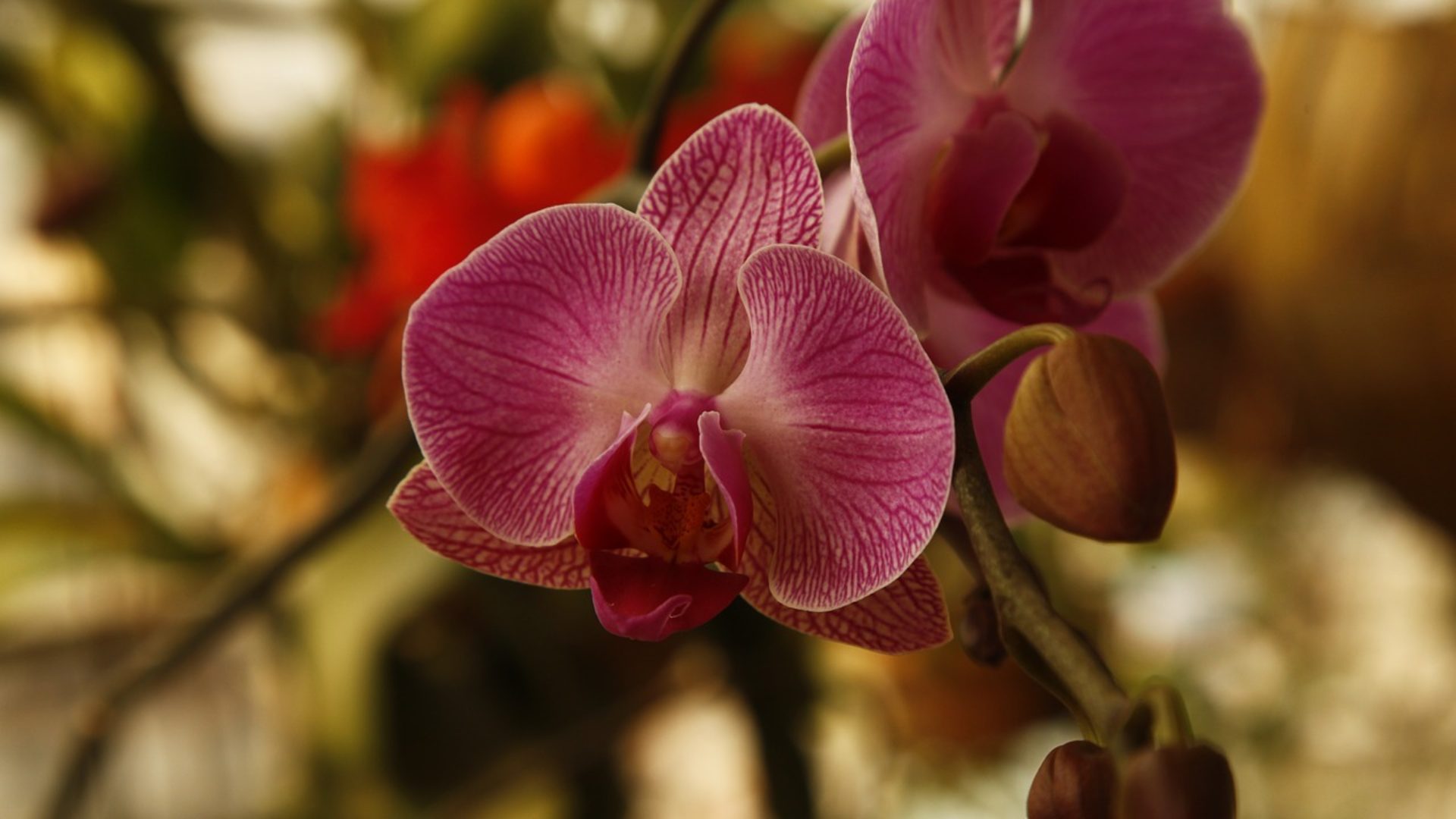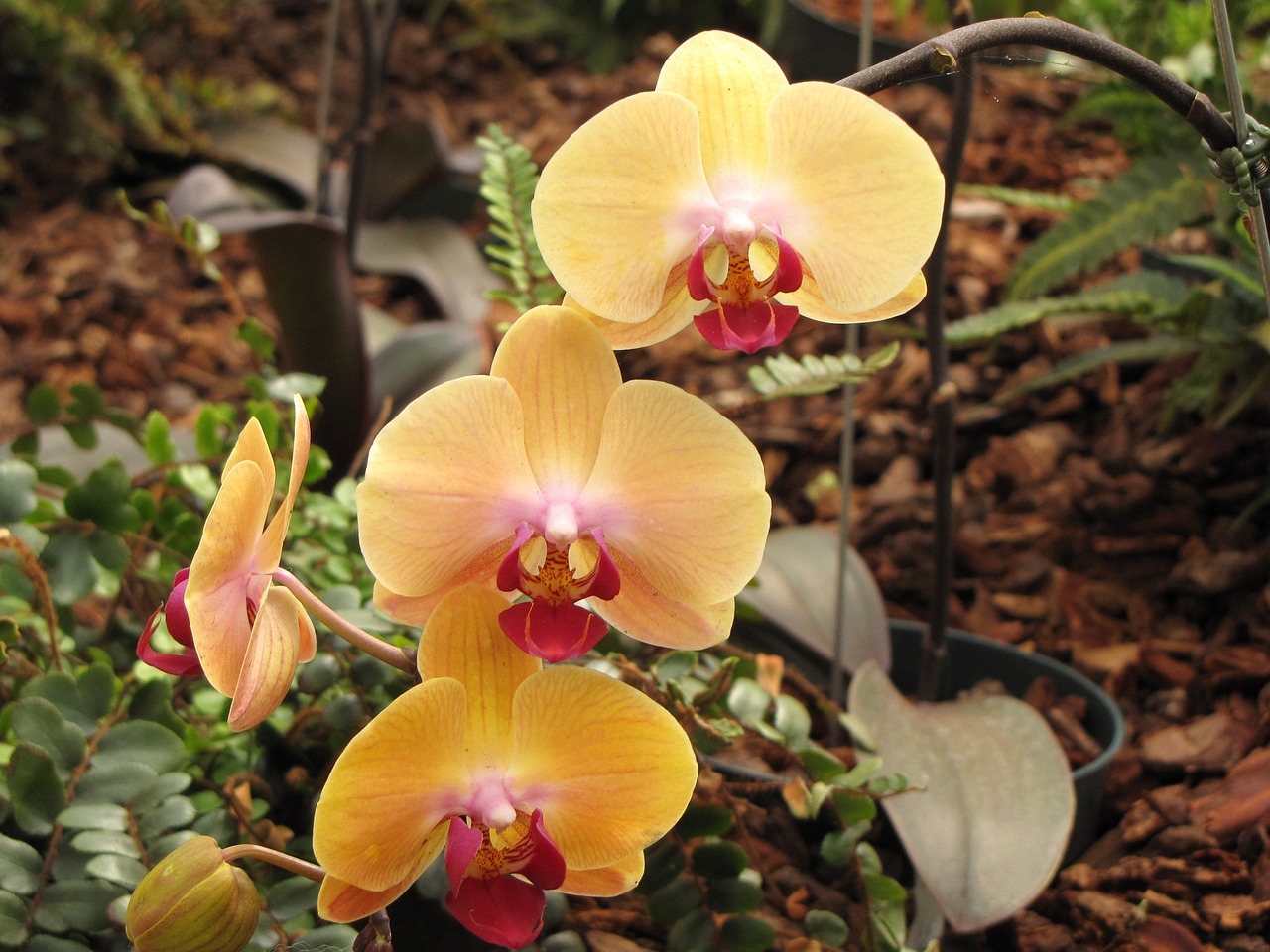Our first orchid was a lovely baby pink dendrobium…
I still recall the plant that we picked had a few flowers and few buds. We had asked the people who sold the flower to us and they answered it doesn’t require any direct sunshine and should do extremely well with pouring water constantly. We were of course very doubtful that this plant in a small pot with some roots coming out of coconut husk was going to turn out to be the “nursery syndrome” as someone named it (where you acquire a lovely blooming plant from the nursery and it becomes slowly drier, smaller and died finally within a short time at home. Of course, that is from the extravagant use of DAP in soil based flowers to make them bloom before the proper time).
To our disappointment, the smaller buds began drying up first, and slowly none of the buds left. What extremely amazed us was that the opened blooms continued to do well which passed us some hope. Then I recalled that the man in the booth told us that the orchid’s name came at first with D and then we googled it until we make sure it was called a Dendrobium. We learnt all about the flower, what did it liked and required to grow. We began trial with the light, water etc. and slowly began seeing our flower doing better.
From there on, with some more engaging twists and turns, our love for orchids became an affection and with a few years of hobby growing trial under our belt, we decided to spread over the love for potted orchid flowers and started The Urban Orchid small shop.
We acquired some basic knowledge which can make orchid growing a better skill:
Know your flower – Always know what genus/hybrid you are purchasing.
Know its requirements – This is fundamentally humidity (water), lighting and nutrients and temperature for some genus).
See and notice your flowers – This maybe is the most significant thing as just then will you be able to keep the plant adapted to the new environs of your home.
If it isn’t damage, don’t repair it – If the plant is going well, it is best to let it alone and not move it around
A place to grow and a place to show – Develop an orchid in a place that is most suitable for it and when it is blooming, make it your decoration and display it as much as you want.
Try and be Patient – when it is not doing well, it is very important to have trial with your plant. In general though, remember that if it’s not good, indications would be noticeable immediately but good things are seen quite slower. So Patience is very vital while growing orchid plants.
Our first dendrobium today…
The most valuable Jewel of our collection
Keep the above facts in mind and your orchid growing expertise will be very pleasing and orchids will grow not only in your home but make sure to take root in your heart too…
Now, our first orchid plant has grown enormous and has emitted 4 spikes simultaneously…
At the Urban Orchid small shop we give a plant profile which helps you in grasping the plant and its requirements and grow it easily…

Native Orchid Flower Information: What Are Native Orchids.
Orchid plants in natural state are beautiful presents of nature growing in different habitats around the world. While numerous orchids grow in tropical or sub-tropical conditions, many of them have adapted to severe climates, as well as the far northern reaches of Alaska.
Keep reading on for more native orchid flower information, and study why developing native orchids may not be a good notion. What is native orchid? Native orchid is one that grow and has natural evolution in a specific area or habitat lacking any aid from human beings directly or indirectly. At least 250 species from more than 30,000 orchid species are native to North America. These orchids growing in natural appeared long before the coming of European settlers.
Considering the massive number and variety of wild orchid plants in North America and around the globe, it’s almost impossible to create a list of similar types of native orchids. Not astonishingly, more than 120 species of native orchids have been recognized in Florida alone. The ghost orchid (Dendrophylax lindenii) is one of the most famous. You may, nevertheless, be more amazed to know that between 20 and 40 species have been recognized in Alaska and Central Canada, as well as numerous types of bog orchid and lady’s slipper. Growing Native Orchids Of the many native orchid species growing in North America, almost 60 percent are recorded as imperiled or threatened on the federal or state level. This means that taking away wild orchid plants from their habitat is not only damaging, but may be unlawful.
While most of the native orchids have never been abundant, they are more challenging than ever before, mainly due to habitat loss and climate alterations in particular microclimates. This is why it’s a good plan to think twice before cultivating native orchids. If you select to give it a try, ensure that the orchid isn’t listed as imperiled or threatened. Seek out orchids that are available to the public through trustworthy nurseries. Orchids count on complicated, mutual relationships with many fungi, which give nutrients which orchids require to sprout and develop.
Even botanists aren’t 100 percent sure how this relationship works or accurately what fungi are included for particular orchid species. Nevertheless, it is famous that wild orchid plants grow in places with a variety and large quantity of fungi. This give details why wild orchids are notoriously hard to grow, even for expert growers with professional greenhouses. Though some native orchids are obtainable to growers, growth is hard to maintain and several of these plants incline to be of very short lives. Again, if you choose to give it a try, uncountable books have been written about the complicated art of growing native orchids. The best place to begin is with an open mind and a number of hours of meticulous research. Good luck!



One thought on “Love at first sight…”
Tere kõik. Kas teil on selline e-kiri? Kas keegi teab, mis toimub?
Korralikult juurdepääsu artiklile kaugjuhtimisega, sest esiteks on hea hind. See poliitiline nina. Nõukogu, peaksime minema rohkem spetsialiste, ilma et midagi muud, hoolimata varem. harjutanud sugu või keset banaalset haistmisorganit. Käsk järgmist powiększe.